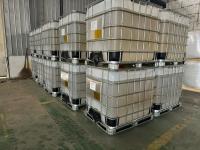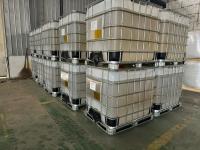Our Products
Product Center / The equivalent model of polyamine FL 2250 can be replaced by Chinafloc

Polyamine (50% Solid, 25–35 cps Viscosity) is a highly cationic, water-soluble polymer widely used as a primary coagulant and coagulant aid in water and wastewater treatment, as well as in industrial processes that require efficient solid–liquid separation. Its balance of medium viscosity (25–35 cps) and high active content (50% solids) gives it fast coagulation speed, excellent charge neutralization, and broad compatibility with various water chemistries.
Below is a comprehensive 900-word explanation of the applications of polyamine (50% solid, 25–35 cps viscosity) across industries and treatment systems.
1. Municipal and Industrial Water Treatment
Polyamine is primarily used as a cationic coagulant in clarification, sedimentation, and filtration units. Its strong positive charge neutralizes the negatively charged colloids and suspended particles found in raw water, forming microflocs that can be removed efficiently in the next treatment step.
➤ Drinking Water Clarification
-
In surface water treatment, polyamine replaces or supplements inorganic coagulants like alum or ferric chloride.
-
It quickly destabilizes suspended solids, clay, and organic color bodies.
-
Produces low-volume, dense sludge, which improves downstream sludge handling and reduces disposal costs.
-
Provides excellent filter run time and clarified water quality.
➤ Industrial Water Clarification
-
Used in cooling water, boiler feed, and process water treatment for turbidity removal and organic matter reduction.
-
In cooling systems, it aids the removal of iron and silica colloids before entering heat-exchange equipment.
➤ Key Benefits in Water Treatment
-
Fast coagulation response, even at low dosages.
-
Works over a wide pH range (4–9).
-
Reduces consumption of aluminum or ferric salts by 30–50%.
-
Produces less residual metal and lower total dissolved solids (TDS) in treated water.
2. Wastewater Treatment and Sludge Dewatering
In wastewater treatment plants, polyamine (50% solid) serves both as a primary coagulant and as a charge neutralizer before flocculant addition. Its medium viscosity makes it ideal for systems requiring quick dispersion and uniform mixing.
➤ Primary Coagulation
-
In chemical wastewater treatment, polyamine destabilizes suspended solids, oil droplets, dyes, and emulsified organics.
-
Used in effluents from food processing, chemical plants, tanneries, textile mills, and refineries.
-
Replaces traditional metal salts for better sludge dewatering and reduced sludge quantity.
➤ Secondary Coagulation and Clarification
-
Enhances settling rate in clarifiers and dissolved air flotation (DAF) systems.
-
Often used together with an anionic polyacrylamide flocculant to produce larger and denser flocs for easier separation.
➤ Sludge Conditioning
-
Before mechanical dewatering (centrifuge, belt press, or filter press), polyamine improves sludge compactness, resulting in higher solids content and less filtrate turbidity.
-
Improves polymer efficiency when used as a pre-treatment before high-molecular-weight flocculants.
3. Paper and Pulp Industry
Polyamine is widely used in the pulp and paper sector as a fixing agent, retention aid, and charge neutralizer due to its strong cationic nature.
➤ Applications:
-
Fixing Agent: Binds anionic trash, pitch, and resins, preventing deposition on paper machines.
-
Retention and Drainage Aid: Improves fiber and filler retention, increases drainage rate, and stabilizes the wet-end system.
-
Clarification of White Water: Enhances suspended solids removal from paper mill process water and reduces load on the effluent system.
-
Internal Sizing and Charge Balance: Maintains cationic–anionic charge balance in the furnish for smoother production and improved paper formation.
➤ Benefits:
-
Reduces consumption of alum or other coagulants.
-
Enhances paper sheet formation and strength properties.
-
Improves overall water loop cleanliness and machine runnability.
4. Oilfield, Petrochemical, and Refinery Applications
In the oilfield and refinery sectors, polyamine (50% solid, 25–35 cps) acts as an oil-water separator, demulsifier, and water clarifier.
➤ Oilfield Water Clarification
-
Used in produced water, injection water, and refinery effluent treatment systems.
-
Rapidly breaks oil-water emulsions, enabling efficient separation.
-
Improves performance of DAF units, separators, and filters.
➤ Drilling and Completion Fluids
-
Used to flocculate fine solids and remove colloidal clays in drilling mud systems.
-
Helps maintain low turbidity and improves mud reusability.
➤ Refinery Wastewater
-
Polyamine effectively coagulates emulsified oils, phenolic compounds, and heavy metals, ensuring compliance with discharge standards.
5. Textile, Dyeing, and Color Removal
Polyamine’s cationic functional groups react strongly with anionic dye molecules, surfactants, and suspended solids, making it an effective color removal agent in textile and dyeing wastewater treatment.
➤ Applications:
-
Removes reactive, acid, and direct dyes from colored effluents.
-
Acts as a pre-treatment coagulant before flocculant addition for fast color removal.
-
Compatible with other coagulants such as polyDADMAC or PAC.
➤ Advantages:
-
Produces clear, colorless treated water.
-
Lower sludge yield compared with metal salt coagulants.
-
Works effectively under high salinity or variable pH conditions.
6. Mining and Mineral Processing
In mineral beneficiation and tailings water recycling, polyamine enhances solid–liquid separation performance.
➤ Applications:
-
Used for clarification of mine effluent, thickener overflow, and tailings water.
-
Neutralizes fine negatively charged mineral particles, improving sedimentation rate.
-
Applied in coal preparation, bauxite, and metal ore processing plants.
➤ Benefits:
-
Increases water recovery and reduces turbidity in recycled process water.
-
Decreases the need for high-dose anionic flocculants.
7. Other Industrial Applications
-
Leather and Tannery Wastewater: Coagulates suspended solids, proteins, and fats.
-
Electroplating and Metal Finishing: Removes heavy metals, phosphates, and chromates.
-
Food and Beverage Industry: Assists in clarification of sugar juice, starch effluent, and meat processing wastewater.
-
Chemical Manufacturing: Treats pigment, latex, and resin wastewater by coagulating emulsified solids.



688_small.jpg)
498_small.jpg)
